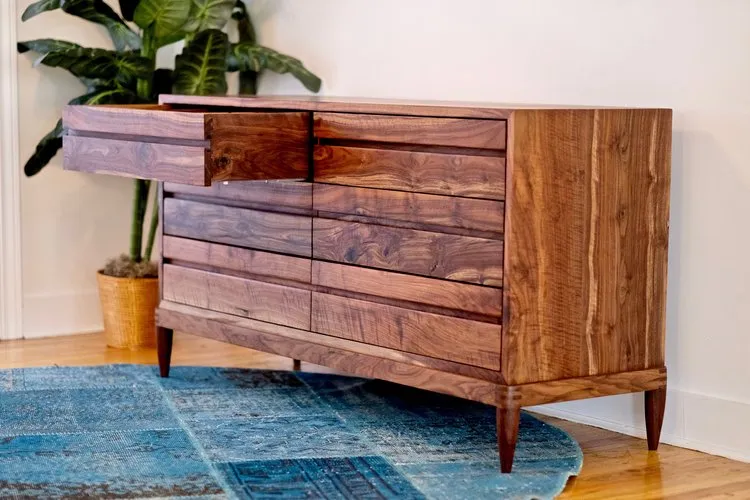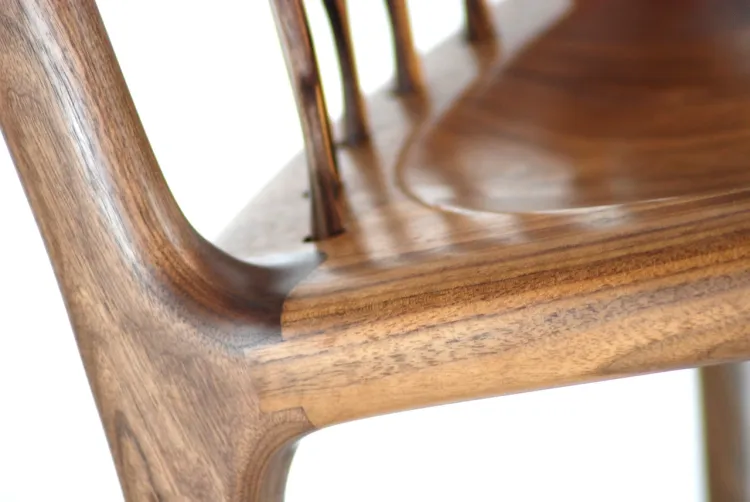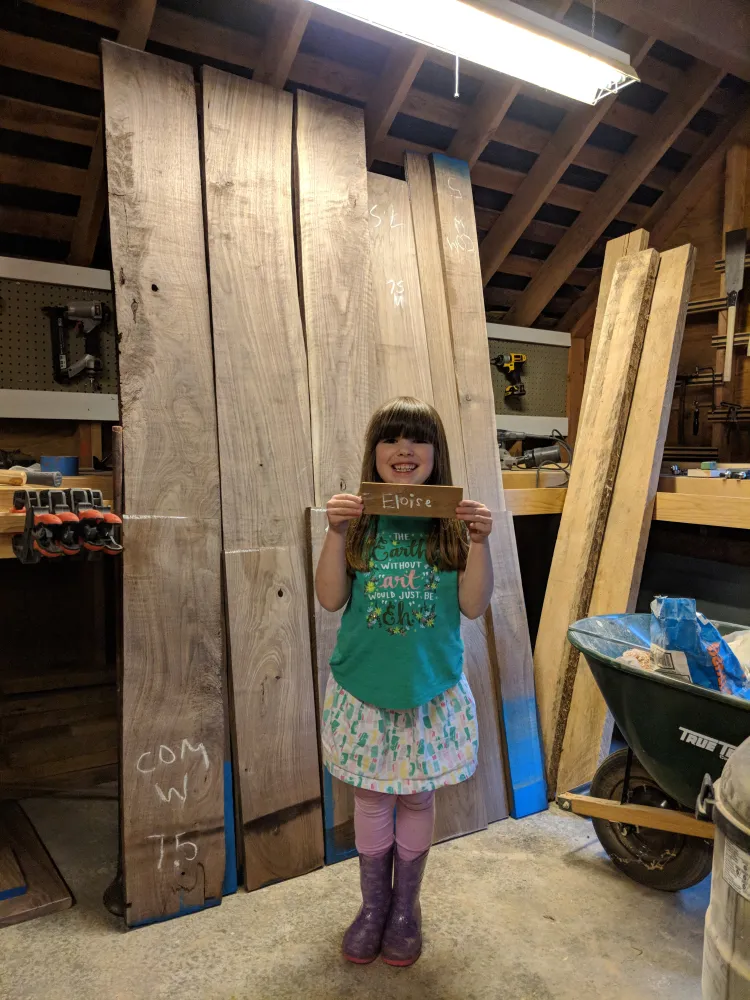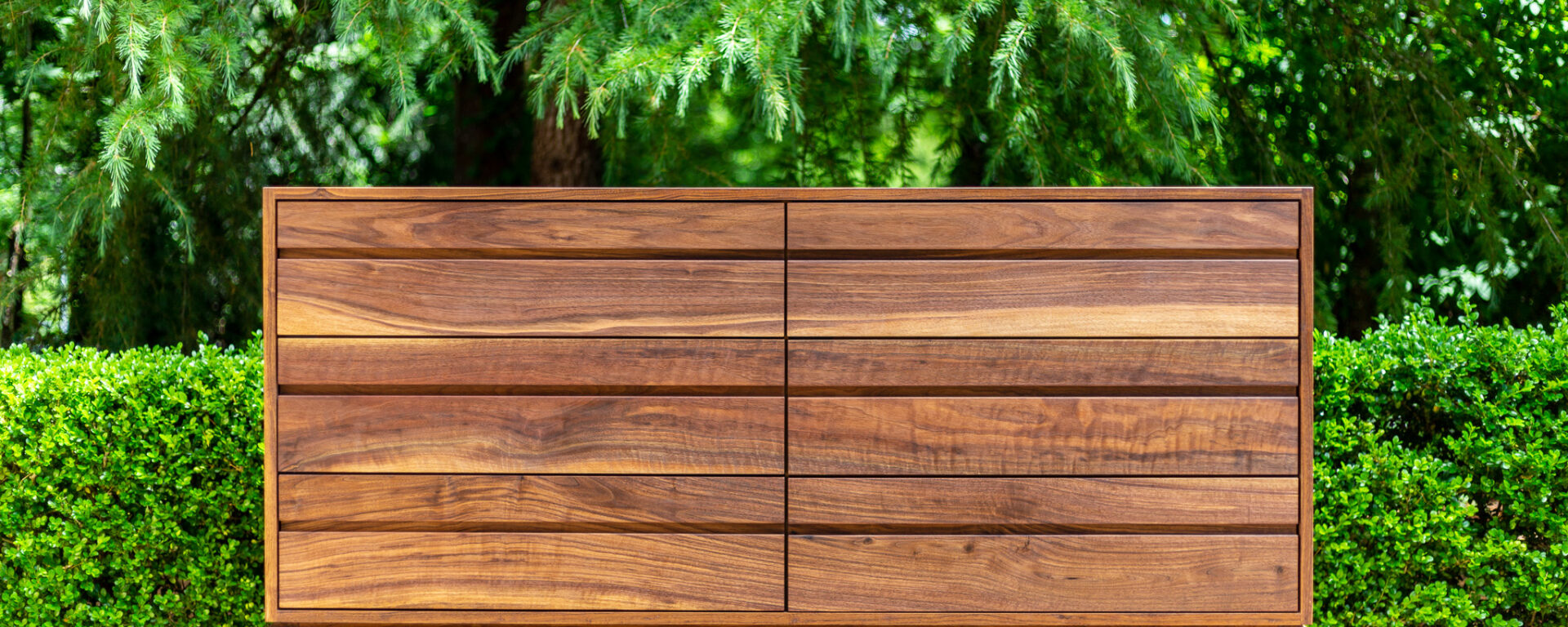Project Origin And Design
Spring 2018; my wife Amy was looking for a dresser on craigslist to replace the cheap one we bought also on craigslist about nine years earlier. As is typical when trying to find furniture together, she emailed me a bunch of links to dressers that she liked all of which were unexciting to me. We eventually stumbled upon this dresser from Beauty & Bread Woodshop north of Seattle and we both immediately were drawn to it. We didn’t however like the price which was something like $4,000 at the time. She suggested that I build something like it myself which was a little surprising to hear given that we have a six year old and a two year old at home and this would mean many hours for me in the garage. I immediately accepted the challenge.

Design Elements
I certainly didn’t want to exactly replicate the dresser but instead keep the elements we liked but improve upon the ones that could be better. We really liked the drawer fronts that sit flush with the front edge of the case. The small reveals around each drawer front and lack of visible face frames creates a clean rectilinear look that MCM is known for. The integral drawer pulls were also a must keep detail and the spindle legs at the far ends of all four corners gave a look of stability.
The design uses finger joints throughout, not only at the drawer boxes but also at the base where the front and back stretchers meets the sides. While certainly quicker to make, I felt that dovetailing the drawers was a better choice and worth the extra time although the strength benefit was probably negligible.
The base to leg joints required a bit more thought. The design looks like the spindle legs are screwed up into the base frame which is a common connection in MCM furniture. I never liked this. It always looked flimsy to me like a small amount of lateral force would snap the legs right off. I remembered the strong and beautiful rocking chair joints made popular to me by the great Sam Maloof. While complicated to make, they were extremely stout and continued the exposed joinery aesthetic of the original piece. I decided this was the way to go.

Finally, the case top and sides are joined with a mitre joint which is very clean and modern looking but in keeping with the fine woodworking aesthetic, I opted for hand cut dovetails. The drawers also appear to be on mechanical hardware glides which is great for kitchen cabinets but not handmade furniture. I chose wood slides with piston fit drawer boxes.
Shopping

So off I went to Crosscut Hardwoods. If you are a woodworker in the northwest, a visit to Crosscut is an absolute must. They have everything from various grades and thicknesses of domestic walnut and oak to exotic species like bubinga and wenge. I headed for the walnut aisle. For the case tops and sides, I chose 4/4 SAB Straight Line. This gave me clear grain where it was most on display. I chose 4/4 Common H&M everywhere else since it was only $5 per bf and, if you are willing to dig through the lumber rack, great deals can be found. For the base frame and legs I chose a piece of 12/4 that had some nice figure to it. The biggest challenge was finding clear boards wide enough to be the drawer fronts but after a few separate trips, I lucked out and found three very nice wide pieces with flowing grain patterns that matched up quite nicely. I managed to get everything into my Volvo sedan and headed home.
Up Next: Part 2 – The Case continues the story by detailing the process for creating the top, bottom and side panels and drawer dividers plus cutting the joinery and dovetails to glue the whole thing together.

